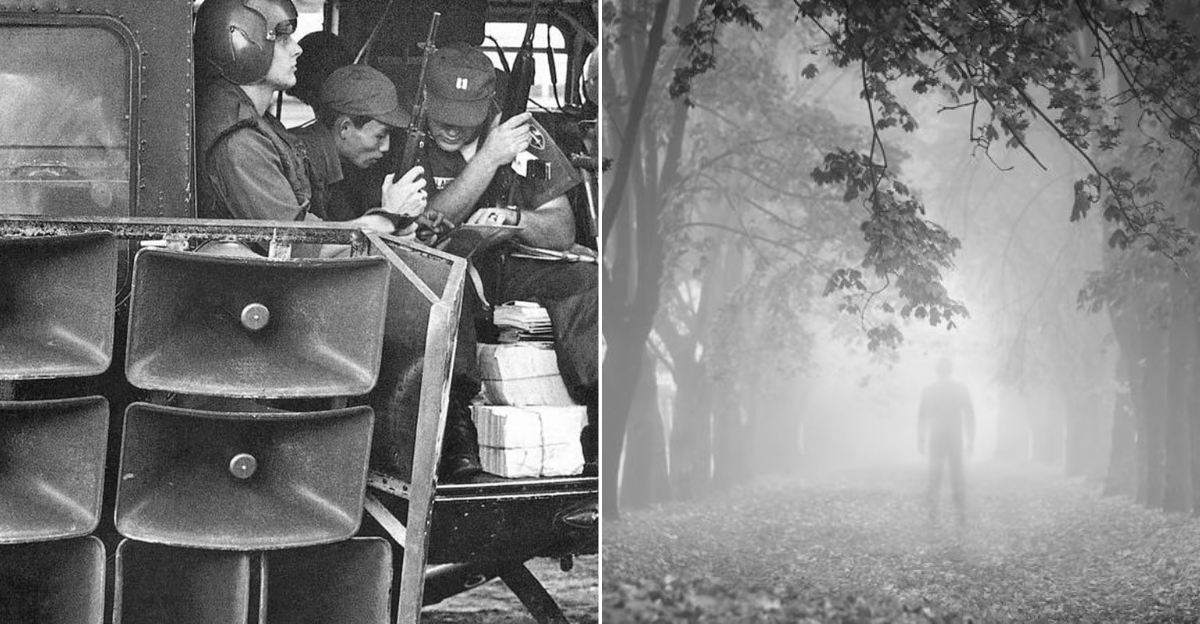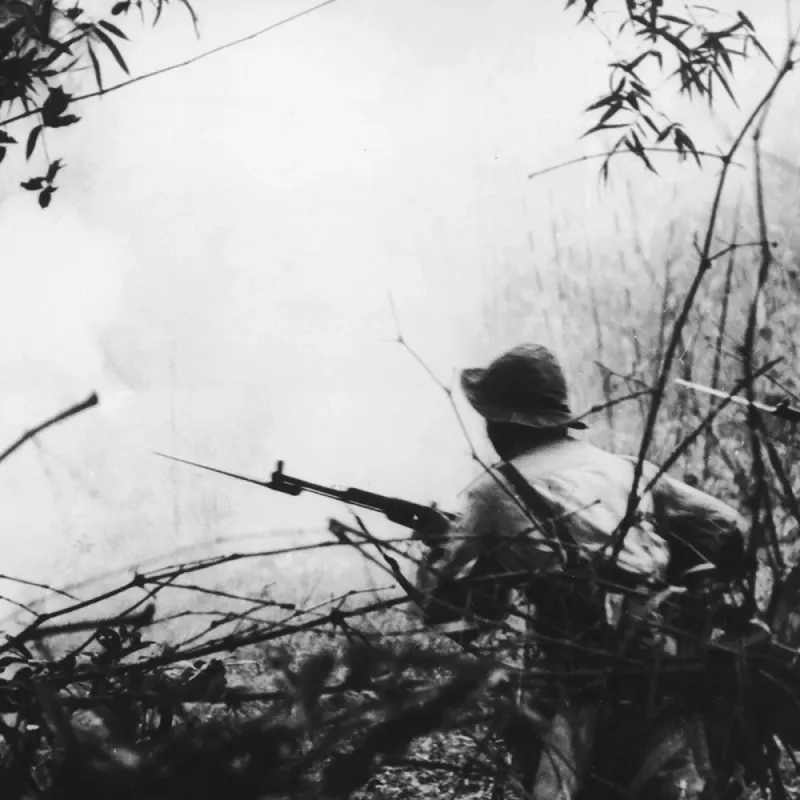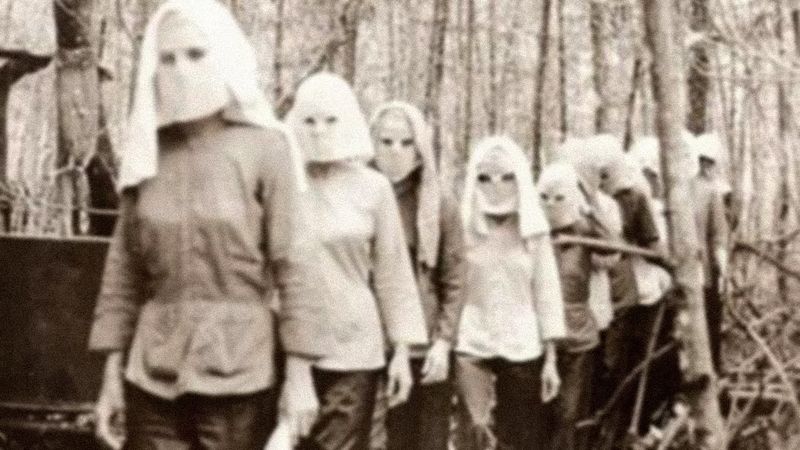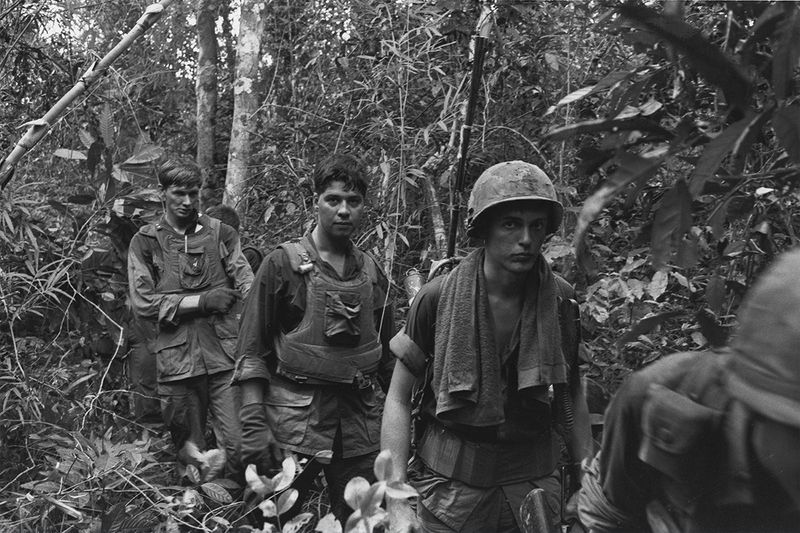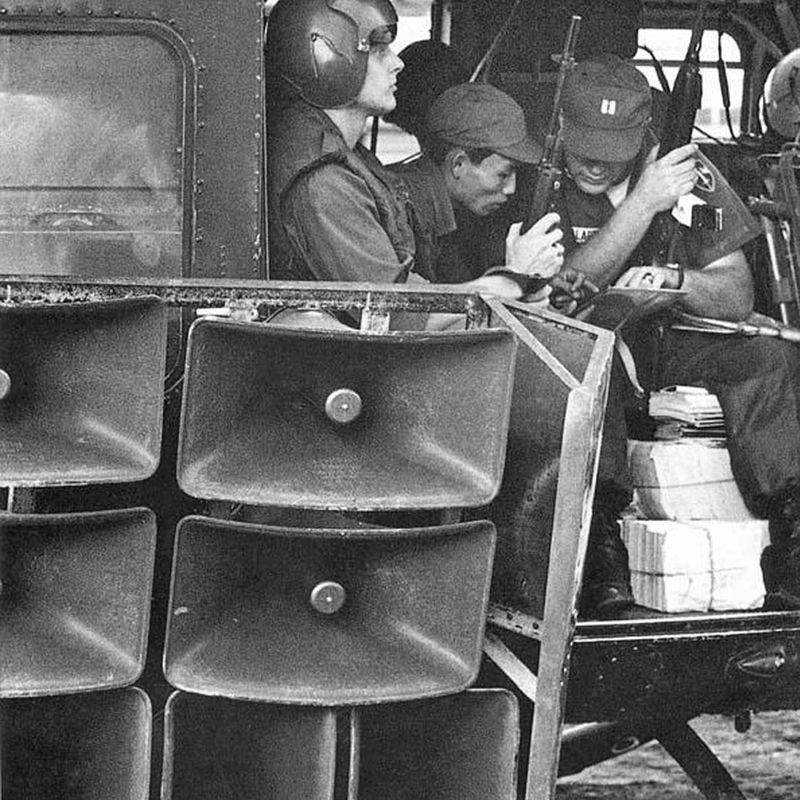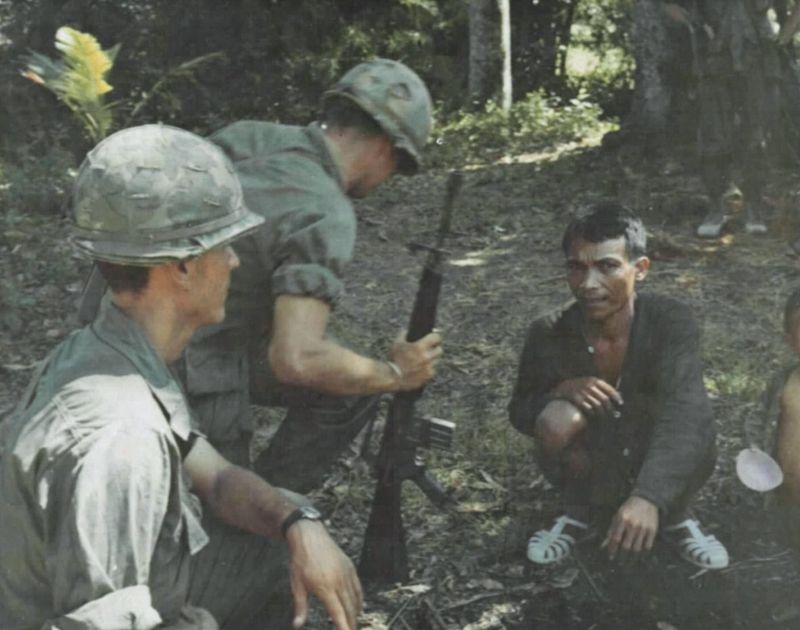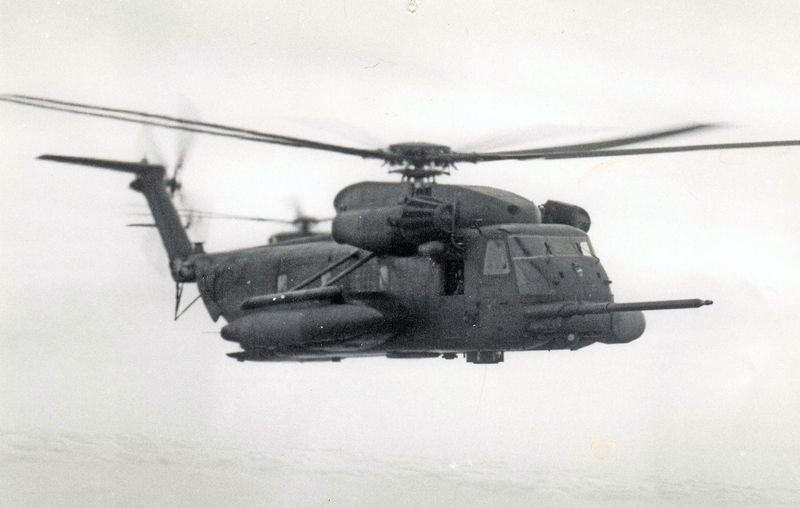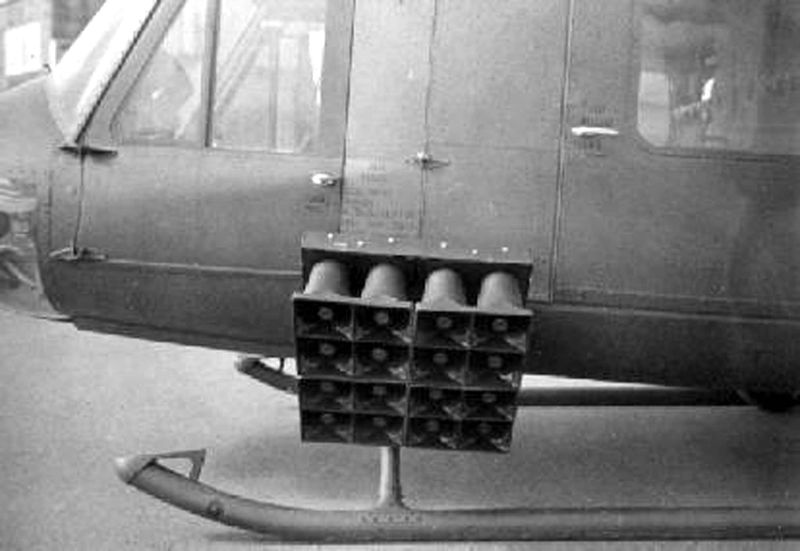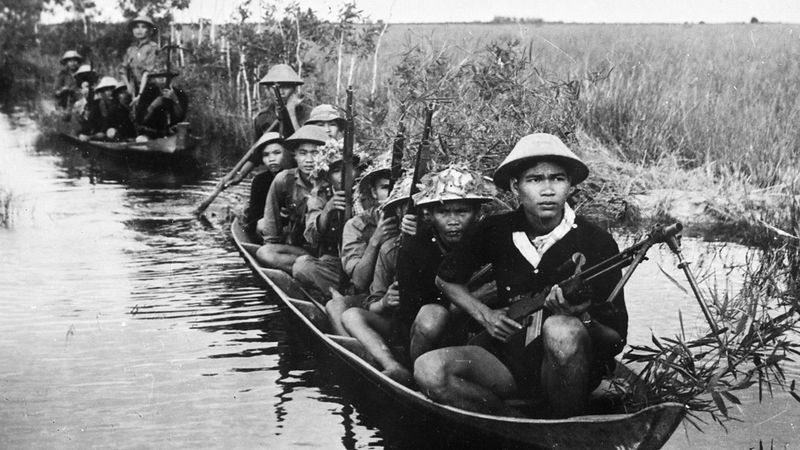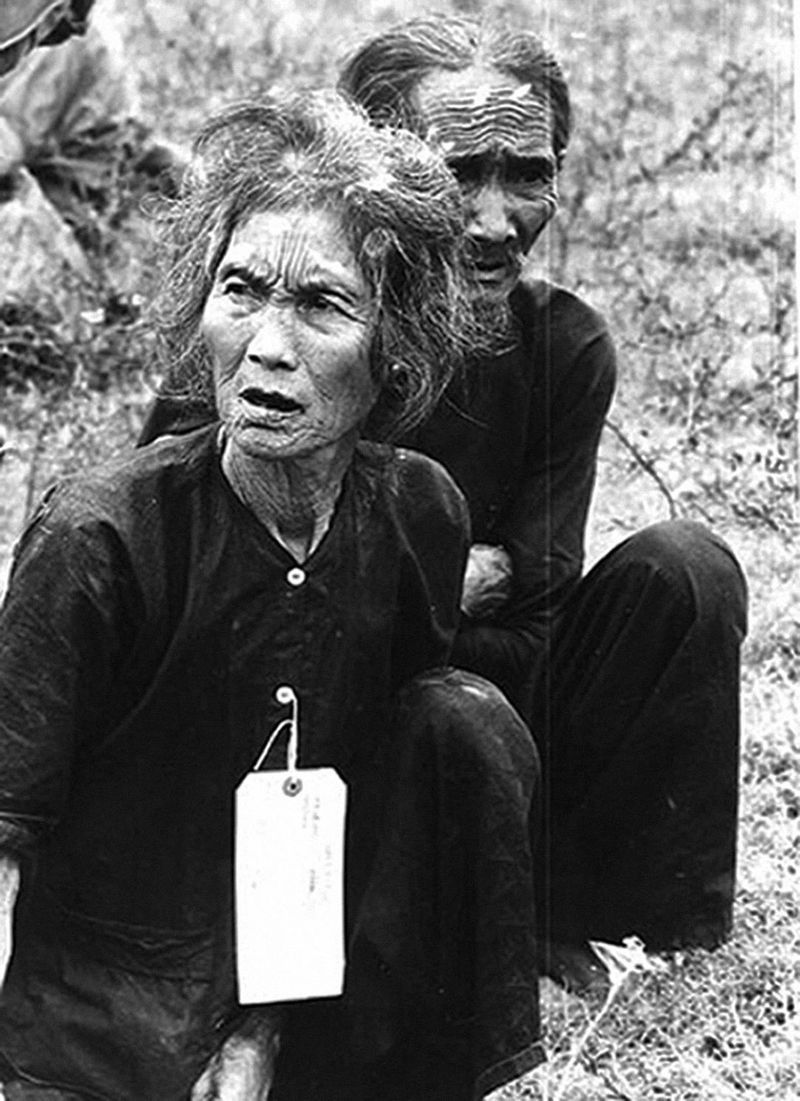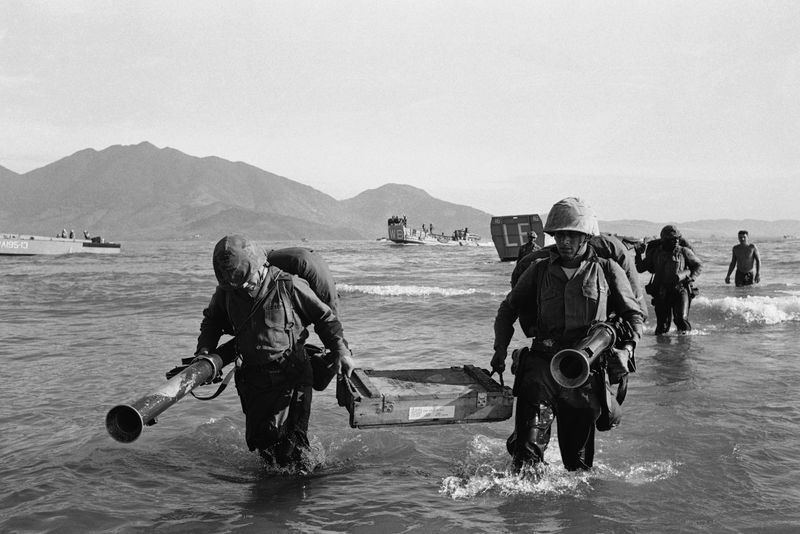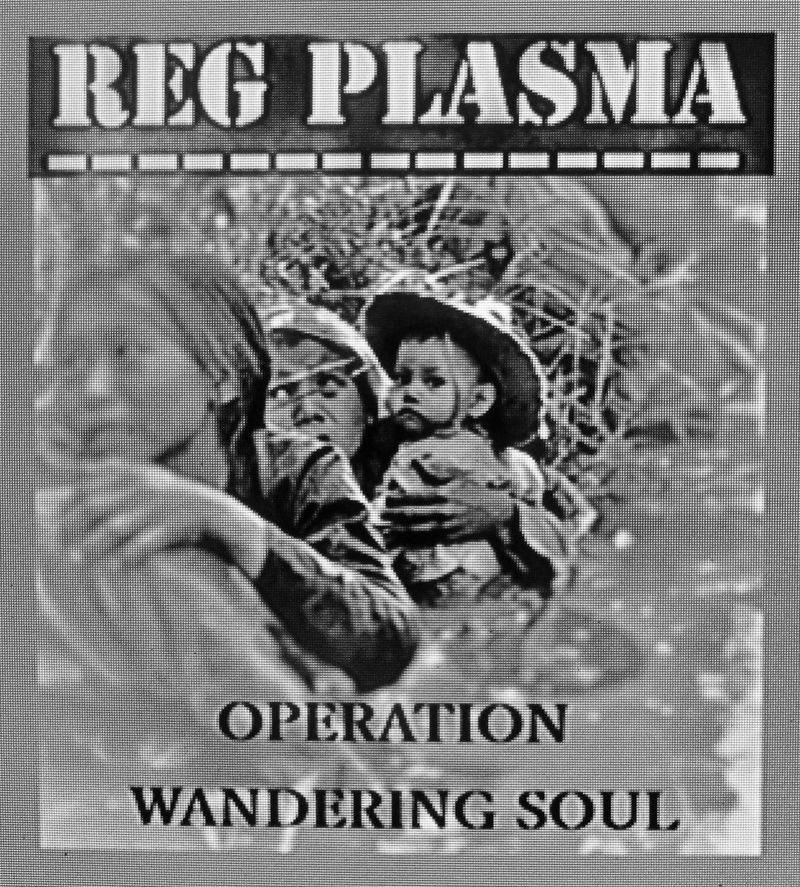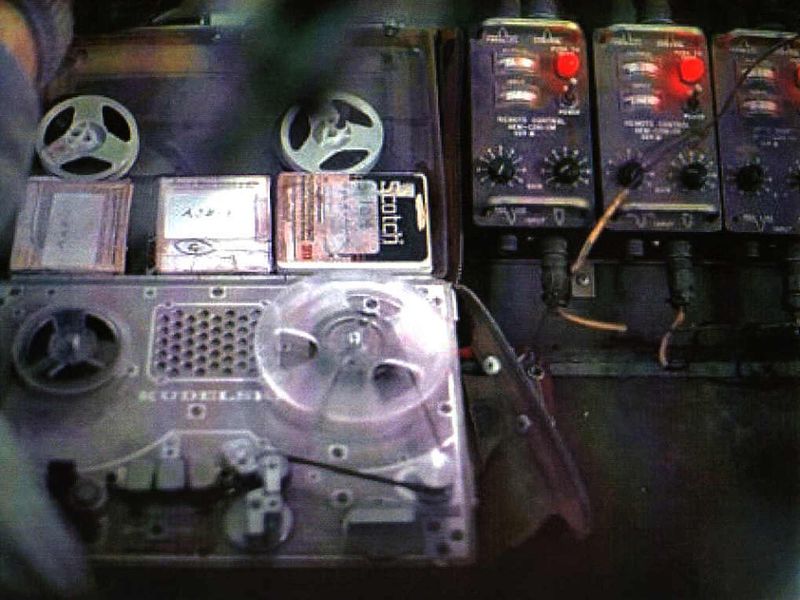Operation Wandering Soul stands out as a chilling psychological tactic employed during the Vietnam War. By tapping into deep-seated Vietnamese spiritual beliefs, the U.S. military sought to unnerve Viet Cong fighters and disrupt their will to fight.
This eerie operation involved broadcasting ghostly sounds designed to mimic lost souls wandering the earth, invoking fear and superstition.
The operation relied on the cultural understanding that improperly buried souls would roam restlessly, turning spiritual concepts into tools of war.
1. It Was Inspired by Vietnamese Spiritual Beliefs
The operation preyed on the local belief that souls of the dead wander if not properly buried—turning death itself into a weapon. The U.S. military exploited these spiritual beliefs to create fear among Viet Cong fighters.
By understanding Vietnamese cultural concepts of the afterlife, they crafted a psychological tactic that resonated deeply with the enemy. This strategic use of cultural knowledge demonstrated an unsettling form of warfare that went beyond physical confrontation.
The chilling effect of these beliefs was amplified by the dense jungle environment, where echoes and shadows added to the ominous atmosphere.
2. The U.S. Military Created “Ghost Tapes”
Recordings of wailing spirits, eerie voices, and Buddhist funeral chants were broadcast to terrify Viet Cong fighters. These “Ghost Tapes” were meticulously crafted to sound hauntingly real, incorporating expert audio engineering to elicit maximum fear.
The recordings featured a variety of unsettling sounds, including echoes and disembodied voices. These audio elements combined to create an unearthly soundscape that played on superstitions.
The tapes served as a chilling reminder of the unseen forces that the U.S. leveraged against their enemy, turning the jungle into a realm of psychological warfare.
3. February 10, 1970, Was a Full Deployment Night
That night marked one of the most intensive audio warfare sessions, targeting jungle areas believed to house entrenched enemy troops. Helicopters flew low, broadcasting the ghostly recordings, creating an atmosphere of dread and confusion.
The strategic timing coincided with Vietnamese beliefs about wandering souls on certain nights, heightening the psychological impact. This full deployment was a calculated move to demoralize and unnerve the Viet Cong.
The eerie sounds reverberated through the jungle, making it seem as if the spirits of the dead had come to haunt the living. The operation left a lasting impression on those who heard it.
4. The Voices Were Made to Sound Like Lost Vietnamese Soldiers
Voice actors—some South Vietnamese, others U.S. personnel mimicking accents—voiced scripts meant to sound like fallen comrades warning the living. These voices were crafted to appear genuine, as if the spirits of past soldiers were reaching out from beyond.
By using familiar accents and phrases, the tapes became a powerful tool of deception. This tactic aimed to create doubt and fear among Viet Cong fighters, making them question their safety and resolve.
The emotional impact was profound, as the haunting messages echoed the fears and superstitions of those who listened, adding to the psychological pressure.
5. The Tapes Had a Codename: “Ghost Tape Number 10”
The most famous tape, used on February 10, became known as “Ghost Tape #10″—and it remains chilling even today. This particular tape stood out for its eerie realism and the psychological impact it had on its listeners.
Its contents were designed to evoke fear and unsettle the enemy, using a combination of wailing, whispers, and haunting melodies. The codename itself became synonymous with the psychological warfare campaign of Operation Wandering Soul.
Even decades later, the tape’s legacy endures, as its recordings have resurfaced, continuing to haunt those who hear it.
6. Psychological Warfare Units Handled the Broadcasts
Specialized PSYOP teams used speakers mounted on helicopters, boats, and backpacks to spread the sound deep into the jungle. These units were tasked with executing the audio warfare strategy, ensuring the ghostly sounds reached their intended targets.
The logistics involved were complex, requiring precise coordination and timing to maximize the psychological effect. By deploying these sounds strategically, the PSYOP units played a crucial role in unsettling the enemy.
Their efforts contributed to the eerie atmosphere that permeated the jungle, making it a battleground of the mind as much as the body.
7. Helicopters Would Fly Low at Night
To enhance the terrifying effect, helicopters flew close to tree canopies, creating the illusion of floating spirits in the darkness. This low-altitude flight path allowed the ghostly recordings to penetrate deep into enemy territory.
The sound of the helicopter blades combined with the eerie broadcasts added to the sense of unease. The approach was designed to make the enemy feel surrounded by supernatural forces.
This tactic exploited the natural fear of the unknown, turning the night into a time of psychological torment as the enemy dreaded the return of the helicopters and their haunting sounds.
8. The Sounds Were Engineered for Maximum Fear
Audio experts slowed voices, added reverb, and layered sounds to create an unearthly, echoing presence—like voices from the grave. The engineering behind the tapes was meticulous, with every sound carefully chosen for its ability to instill fear.
The use of reverb and echo made the recordings seem otherworldly, as if the listener was hearing voices from beyond. This attention to detail ensured the tapes had the desired psychological impact.
The resulting soundscape was both terrifying and mesmerizing, drawing listeners into a realm where the line between reality and the supernatural blurred, amplifying their fears.
9. Some Recordings Featured Weeping Children
Adding to the disturbing nature, a few tapes included the cries of ghostly children calling for their parents. These heart-wrenching sounds played on the emotional vulnerabilities of those who heard them.
The inclusion of children’s voices added a layer of sorrow and urgency to the broadcasts. This tactic aimed to create a sense of helplessness and despair among the enemy, making them question their actions.
The haunting cries were a powerful reminder of the human cost of war, adding a chilling dimension to the psychological warfare campaign. The effect was profound, leaving listeners emotionally shaken.
10. The Tactic Wasn’t Just For Show—It Had Real Impact
Some Viet Cong units reportedly fled from their positions after hearing the broadcasts, too afraid to stay. The psychological effect of the ghostly sounds was significant, disrupting enemy operations and morale.
The tactic exploited the natural human fear of the unknown, turning the jungle into a realm of psychological danger. The success of the operation demonstrated the power of psychological warfare in influencing the outcome of battles.
By preying on deeply held beliefs and fears, Operation Wandering Soul became a formidable tool in the U.S. military’s arsenal, proving that sometimes, the mind is the most powerful weapon.
11. Locals Sometimes Believed Real Spirits Were Involved
In some villages, elders believed the U.S. had disturbed actual spirits, creating widespread anxiety. This belief added to the psychological impact of the operation, as locals spread stories of ghostly encounters.
The fear of real spirits being involved heightened the sense of danger and unease. This reaction demonstrated the deep-rooted cultural beliefs that the operation tapped into. The stories of wandering souls became a part of local folklore, amplifying the operation’s effectiveness.
By influencing not just soldiers but also civilians, the psychological warfare tactic extended its reach beyond the battlefield, affecting the entire community.
12. The Operation Was Considered “Black Psy-Ops”
This was one of the few psychological tactics classified as black propaganda—covert and culturally manipulative. The operation’s covert nature allowed it to exploit cultural beliefs without immediate detection.
This classification meant that the tactic was considered both effective and ethically questionable. The use of cultural manipulation added a layer of complexity to the warfare strategy.
The operation demonstrated the lengths to which military planners would go to gain an advantage. By using black psy-ops, the U.S. military engaged in a form of warfare that blurred the lines between tradition and modern combat, leaving a controversial legacy.
13. The Script Was Based on Vietnamese Afterlife Lore
Lines were carefully crafted to reflect Buddhist ideas of karma, wandering souls, and unfulfilled duties. The authenticity of the scripts was crucial to their effectiveness, as they needed to resonate with Vietnamese cultural beliefs.
By incorporating familiar concepts, the tapes became a powerful tool of psychological manipulation. The scripts reinforced the idea that the dead were restless due to unfinished business or improper burial.
This added a layer of spiritual fear to the broadcasts, making them more convincing. The careful crafting of the scripts demonstrated a deep understanding of the cultural nuances involved in psychological warfare.
14. Some Troops Refused to Participate
A few American soldiers, disturbed by the tapes themselves, requested transfers or refused to handle the broadcasts. The eerie nature of the recordings affected not only the enemy but also those tasked with deploying them.
This reaction highlighted the moral and emotional challenges faced by soldiers involved in psychological warfare. Some felt uncomfortable using tactics that played on superstitions and fear.
The refusal to participate underscored the ethical dilemmas inherent in such operations. The unsettling nature of the tapes left an impact on all who encountered them, blurring the line between duty and personal conviction.
15. It Was Used Most Heavily Near Da Nang
On February 10th, broadcasts were directed at caves and tunnels near Da Nang, where resistance had been strong. The strategic choice of location was based on the density of enemy forces in the area.
By targeting these strongholds, the operation aimed to disrupt Viet Cong activities and morale. The jungle terrain amplified the eerie sounds, creating an oppressive atmosphere that was difficult to escape.
This focus on Da Nang demonstrated the tactical use of psychological warfare to weaken enemy resolve. The operation’s success in this region reinforced its reputation as a powerful tool in the U.S. military’s arsenal.
16. Some Tapes Asked the Living to Bury the Dead
Messages would beg listeners to perform proper funeral rites—heightening guilt and spiritual fear. These pleas were crafted to resonate with Vietnamese cultural values, adding a moral dimension to the psychological warfare.
The tapes played on the belief that unburied souls would wander restlessly, creating a sense of urgency and responsibility. This tactic aimed to disrupt the enemy’s focus, as the weight of spiritual obligation weighed heavily on their minds.
The emotional impact was profound, as the haunting voices appealed to deeply held beliefs about honor and duty. The result was a powerful blend of fear and compassion.
17. “Wandering Soul Night” Became a Nickname Among Troops
After February 10, 1970, some units referred to similar operations as “Wandering Soul Nights.” This nickname captured the essence of the psychological tactic, as the eerie sounds became synonymous with the operation.
The term reflected the haunting nature of the broadcasts and their impact on both enemy and ally. The nickname served as a reminder of the operation’s effectiveness and the fear it instilled.
By encapsulating the essence of the operation, “Wandering Soul Night” became a part of military folklore, highlighting the power of psychological warfare in shaping the experiences of those involved in combat.
18. The Legacy Still Haunts Listeners Today
Recordings of Ghost Tape #10 have resurfaced online—and even decades later, they remain deeply unsettling. The enduring nature of these sounds speaks to their psychological potency.
Modern listeners find themselves drawn into the same eerie atmosphere that once haunted soldiers and civilians alike. The tapes continue to evoke fear and curiosity, as their legacy persists in popular culture.
The haunting nature of the recordings serves as a reminder of the Vietnam War’s psychological battles. By transcending time, the tapes demonstrate the lasting impact of psychological warfare on the human psyche, leaving a chilling legacy for generations to explore.
